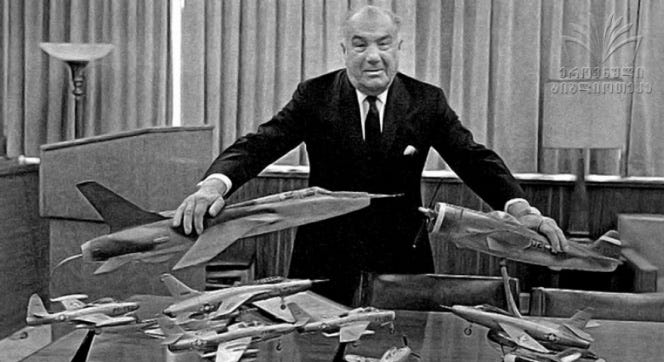US pays tribute to Georgian-American legendary aircraft designer Alexander Kartveli






The Embassy of Georgia in the United States of America, in partnership with US-based Alexander Kartveli Association, celebrated the life and work of Alexander Kartveli (born Alexander Kartvelishvili, ალექსანდრე ქართველიშვილი) — legendary American aircraft engineer of Georgian origin.






On November 14th, Georgian Charge d’Affaires Giorgi Tsikolia and former US Ambassador to Georgia Richard Norland gave presentations highlighting the achievements of Kartveli and history of US-Georgia cooperation, including in the military field among others. The documentary Alexander Kartveli and His Life was presented by Richard Rubin, Alexander Kartveli Association Chairman. Georgian film director Ramaz Bluashvili has told the story of the Georgian polyphonic song Chakrulo sent to airspace by NASA, showcasing the short film “The Song — How a Georgian Folk Song was placed on the Voyager Mission Spacecraft”
Alexander Kartveli became a US citizen emigrating from Europe in the late 1920’s escaping the rise of Bolshevik Russia and war-torn Europe. A graduate of Paris Highest School of Aviation, he became an influential aircraft engineer, a pioneer in American aviation history, and an early technology innovator. Kartveli achieved important breakthroughs in military aviation and design. He is considered to be one of the most important aircraft designers in US and world history, yet regrettably is known only to few.






Most of his career, he worked at the Republic Aviation Corporation — an American aircraft manufacturer based in Farmingdale, Long Island, NY. Originally known as the Seversky Aircraft Company, the company was responsible for the design and production of many important military aircrafts. Its founder Alexander de Seversky was another Georgia-born individual who made a signification contribution to the US aviation history.
Alexander Kartveli is solely responsible for seminal design advancements for legendary aircrafts such as the first metal plane to cross the Atlantic, the P-35 (the first single-seat fighter to feature all-metal construction), the P-47 Thunderbolt used to win the second World War by the United States, the XF-103 high speed bomber, and the F-105 used extensively in Vietnam, as well as the A-10 Thunderbolt II (Warthog) still in service today and used in Operation Desert Storm.






Kartveli also made a significant contribution to the effort for faster and more effective fighter combat aircrafts as well as in civilian designs. Republic Aviation’s 4-engine triangle jet was designed to fly 4,960 miles an hour and was capable of delivering a 2000-pound bomb from an altitude of 120,000 feet. Likewise, the A-10 Warthog fighter designed by Republic in the 1960’s under Kartveli’s direction remains feared by enemies and revered by the US Air Force decades after Kartveli’s death. Despite rapid innovation in aeronautical materials and designs since the 1970’s, 320 A-10s remain in service.
Alexander Kartveli’s contributions to hypersonic flight theory provided important stepping stones towards space travel accomplished by NASA. His advisory work to the National Advisory Committee for Aeronautics (NACA), the predecessor to NASA, formed the basis for designs for the NASA’s space shuttle and orbital aircraft capable of returning to the earth.
In 1974, he died at age 77 in New York.
See More: The “Song” Official Trailer
ამერიკის ხმა/VOA on the Embassy of Georgia celebration of Alexander Kartveli’s achievements in US aviation history







